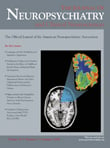Dr. Sanguineti writes in his introduction to The Rosetta Stone of the Human Mind: Three Languages to Integrate Neurobiology and Psychology that, “…this book has to be taken for what it really is: an admittedly naive exercise in the integration of the different approaches used to probe the mystery of the mind” (p. xxiii). Put less humbly, the book is a cogent set of working papers that synthesize physics and mathematics, neurobiology and psychology as each relates to understanding the concepts such as consciousness, the unconscious, knowledge representation, and emotion.
The book includes thirteen chapters organized into three sections. The first section, “Learning the Languages,” reviews the attempts over the course of humanity to understand the mind and the human subject. It includes a brief primer on three current perspectives on these issues: the works of Alwyn Scott (nonlinear dynamics), Antonio Damasio (neurology), and Gerald Edelman (neurobiology). These three perspectives on the mind are continuing threads through the second section, “Seeking the Understanding,” and the third section, “Applying the Knowledge,” which considers clinical practice and different aspects of culture. Take as an example Chapter 5, “Consciousness,” which compares and contrasts the perspectives of the three “languages” around this phenomenon. Dr. Sanguineti bootstraps from the different perspectives to issues that arise from the synthesis, such as: “…most of the ‘real’ evidence in support of core consciousness and primary consciousness [from Damasio] stems from neuropathology” (p. 52), and “…whether consciousness is an either-or phenomenon that is implied in Edelman and Tononi’s model, a condition that leaves no space for such ambiguous states as dreams” (p. 55). By leveraging the different perspectives, Dr. Sanguineti invites science to approach greater clarity on these complex issues.
Among the most powerful demonstrations of this position is a retelling of the myth of Psyche as an illustration, “…which represents the creative expression of inner mental states in ways that are otherwise equaled by modern, rationalistic thinking” (p. 27). Against this backdrop, Dr. Sanguineti demonstrates the inadequacy of objective science in capturing inherently subjective concepts such as ego, self, and consciousness. This call for a redirection of the science to subjective mental phenomena is a provocative suggestion. However, the gold in the book is the honest attempt, evidenced in part by the significant number of footnotes, to synthesize complex and seemingly disparate ideas.
Although the writing is clear and definitions are frequent, the inherent complexity of material such as consciousness, the self and ego, and nonlinear dynamics assume a base of knowledge in at least one of the scientific “languages” Dr. Sanguineti discusses. Those with requisite knowledge will find the text as a good starting point to explore issues; others will find it as a way to acquaint themselves with related material in another discipline. The incredible breadth of material covered in the book is akin to a lively graduate seminar and, as such, may be of interest to scholars and clinicians alike. The clinical application of the book is indirect: Dr. Sanguineti’s illustration of the dual value of psychopharmacology (objective) and psychotherapy (subjective) is likely not lost on any good clinician. Nonetheless, Dr. Sanguineti’s adroit synthesis forces reflection on science and therapy of the human psyche in a way that is widely accessible and, for that reason, fills a void that exists in many current discussions of these issues.
Acknowledgments
Dr. Kean is Assistant Professor in the Department of Speech and Hearing Sciences at Indiana University and a Clinical Research Associate in Neurorehabilitation at the Rehabilitation Hospital of Indiana.

